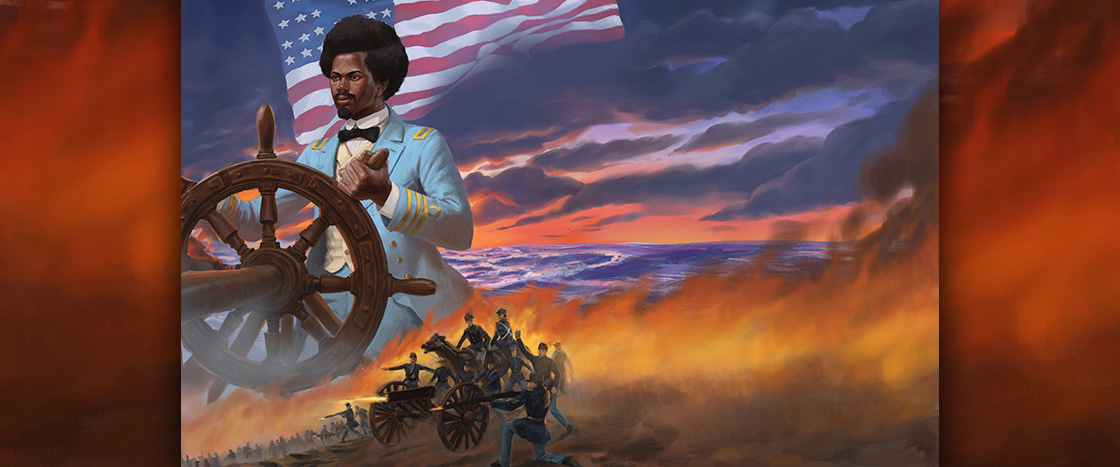Before dawn on May 13, 1862, a ship called the Planter steamed through the harbor of Charleston, South Carolina.
The mood on the water was uneasy that night. For more than a year, a terrible war had been raging in the United States—the Civil War between the states of the North and the South. Southern ships filled Charleston harbor, guarded by armed soldiers. Just beyond the harbor, Northern ships were waiting with loaded cannons, prepared to destroy any Southern ship that dared approach.
The Planter carried guns and ammunition for the Southern army, and the Southern harbor guards assumed it was making an early-morning delivery. The guards at each checkpoint recognized Captain C. J. Relyea (rel-YAY) in his familiar gold-trimmed jacket and wide-brimmed straw hat, which was tilted low over his face. The captain waved as he approached each of five checkpoints and gave the proper signal with the ship’s whistle—three long, shrill toots followed by one hiss. One by one, the guards let the Planter pass.
Suddenly, it was clear that something was very wrong. The guards at the last checkpoint watched in astonishment as the Planter picked up speed and headed out to sea. What was Captain Relyea doing? Why would he be heading directly into the path of the Northern ships, which would surely blast the Planter to pieces?
In fact, it was not Captain Relyea at the wheel of the Planter that morning. The man in charge was Robert Smalls, a 23-year-old enslaved man. Huddled in the damp hold of the ship were Robert’s wife, Hannah, and their children.
Robert was leading a mission of extraordinary daring. Within moments, he and his family would be free—or they would be dead.
In the early morning of May 13, 1862, a ship called the Planter steamed through the harbor near Charleston, South Carolina.
The mood was uneasy that night. For more than a year, a terrible war had been raging in the United States—the Civil War between the states of the North and the South. Southern ships filled Charleston harbor. They were guarded by armed soldiers. Just beyond the harbor, Northern ships were waiting, prepared to destroy any Southern ship that dared come near.
The Planter carried weapons for the Southern army. The Southern harbor guards thought it was making an early-morning delivery. The guards at the checkpoints recognized Captain C. J. Relyea (rel-YAY). He was wearing his familiar jacket and wide straw hat, which was tilted low over his face. The captain waved and gave the correct signal with the ship’s whistle at each of five checkpoints. Each guard let the Planter pass.
Suddenly, it was clear that something was wrong. The guards at the last checkpoint watched in shock as the Planter sped up and headed out to sea. What was Captain Relyea doing? Why would he be heading into the path of the Northern ships? They would surely attack the Planter!
In fact, it was not Captain Relyea at the wheel of the Planter that morning. The man in charge was Robert Smalls, a 23-year-old enslaved man. Also on the ship were Robert’s wife, Hannah, and their children.
Robert was leading a daring mission. Within moments, he and his family would be free—or they would be dead.


